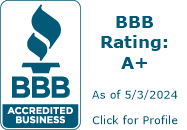← View All Buying Guides


Daycare Cribs Buying Guide
School Outlet’s Tips
-

Safety Certifications
-

Adjustable Mattress Heights
-

Frame Construction
-

Cleaning
-

Mobility
-

Size and Spacing
Daycare Cribs Styles
-

Foundations Safety Craft Cribs
-

Foundations First Responder Evacuation System, Crib Frames
-

Foundations Hardwood Folding Cribs
-

Foundations Portable Play Yard Style Cribs
-

L.A. Baby Cribs
-

Fixed Side Cribs
-

Drop Gate Cribs
-

Steel Frame Cribs
-

Play Yards - Commercial Strength
-

Portable Compact Cribs
-

Foldable Cribs
-

Full-Size Cribs
-

Wood Frame Cribs



















